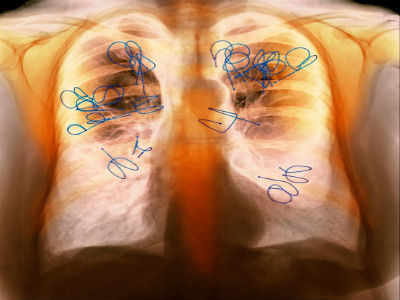New lung cancer find paves way for better therapies

Adenocarcinomas, a non-small cell lung cancer (NSCLC), account for about 40 percent of cancer diagnoses, but few treatments are available for the disease.
The team led by Elena Levantini of Beth Israel Deaconess Medical Center (BIDMC) identified a subtype of human adenocarcinoma. The research could help determine which individuals are at greatest risk of developing lung tumors that may be amenable to a new therapy to inhibit their progression.
“Advances in lung cancer therapy require a greater understanding of the molecular origins of this deadly disease,” said last corresponding author Levantini. “Understanding the differences among lung cancers also could lead to innovations in treatment strategies and allow us to overcome drug-resistance, relapse and disease progression.”
Levantini and colleagues previously showed that NSCLC tumor cells frequently express too little or none of a transcription factor called C/EBP alpha, a protein that regulates gene expression and cell proliferation in lung tissues. It’s also known to play a role in a form of leukemia, as well as liver cancer, squamous cell skin carcinomas, squamous cell cancers of the head and neck and other cancers.
In a series of in vitro experiments, the researchers demonstrated that C/EBP alpha indeed works as a tumour suppressant by restraining the expression of another molecule known to play a role in triggering and maintaining tumor growth. This molecule, called BMI1, is an oncogenic protein that has been implicated in colon cancer, a form of leukemia and breast and gastric cancers.
“Our findings suggest that the lung cancer subtype defined by the loss of C/EBP alpha expression might specifically benefit from therapies that inhibit BMI1,” the scientists wrote. “Thus, identifying factors that modulate its expression has generated major clinical interest.”
The research team was also able to validate its findings in mice.
Levantini noted, “Our findings could help us design better therapies for the subset of adenocarcinoma patients with low C/EBP alpha and high BMI1 expression pattern.”
The results are published in the journal Science Translational Medicine.


